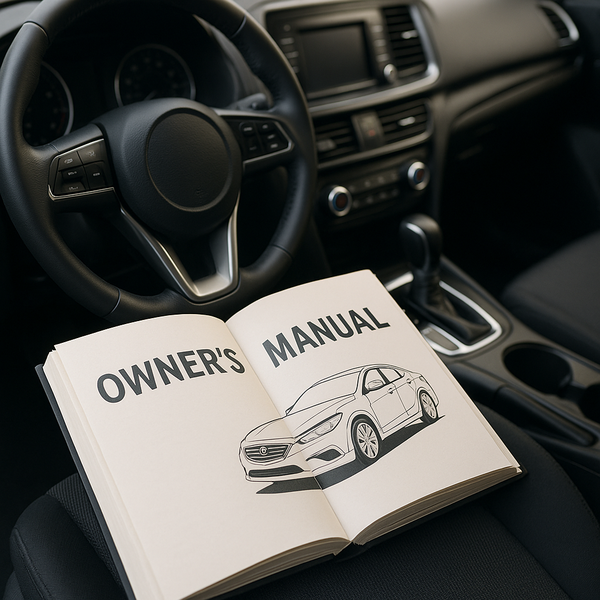
Every vehicle comes with an owner's guide, a comprehensive resource often overlooked but incredibly valuable. This document is the primary source of information about your specific make and model, providing detailed instructions on operation, maintenance, and troubleshooting. Understanding how to navigate and utilize your owner's guide can save you time, money, and potential frustration, ensuring you get the most out of your investment and keep your vehicle running smoothly for years to come. Think of it as your vehicle's personalized encyclopedia.
Why Your Owner's Guide is Indispensable
Many drivers only reach for their owner's guide when something goes wrong, like a mysterious dashboard warning light illuminates or a feature isn't working as expected. However, proactively familiarizing yourself with the guide can prevent issues before they occur and empower you to perform basic tasks. It contains critical information tailored specifically to your vehicle's year, make, and model, covering everything from fluid types and capacities to understanding complex electronic systems. Relying solely on general online searches might provide inaccurate or generic advice that doesn't apply to your specific car or truck.
What You'll Find Inside Your Guide
Owner's guides are typically organized into logical sections, making it easier to find the information you need. Common sections include an introduction to the vehicle's basic controls and features, detailed instructions on operating various systems (like the infotainment system, climate control, or specialized driving modes), and a section on safety information, including airbag systems and child restraints. You'll also find crucial details about the vehicle's specifications, such as tire size and recommended pressure, fuel requirements, and towing capacity if applicable.
A major portion is dedicated to maintenance and care. This is where you'll find the recommended service schedule, listing when specific tasks like oil changes, filter replacements, fluid checks, and belt inspections should be performed. It details the correct type and amount of engine oil, coolant, brake fluid, and transmission fluid to use. This section is vital for adhering to manufacturer recommendations, which is often required to maintain your warranty and ensure the longevity of your vehicle's components. It also provides guidance on routine checks you can perform yourself, such as checking tire pressure or topping up windshield washer fluid.
Troubleshooting is another key area. This section helps you identify the cause of common problems and provides steps you can take before needing professional help. It explains the meaning of dashboard warning lights and indicators – perhaps one of the most frequently referenced parts for many drivers. Knowing what a blinking check engine light or an oil pressure warning means can help you assess the severity of an issue and decide whether it requires immediate attention or can wait for a service appointment. It often includes basic procedures like changing a flat tire, jump-starting a battery, or replacing a fuse.
Using Your Digital Owner's Guide
In addition to the physical booklet, most modern vehicles offer a digital version of the owner's guide, accessible through the vehicle's infotainment system or a manufacturer's website or mobile app. Digital guides often include search functions, making it even easier to locate specific topics quickly. Some digital versions might also feature video tutorials or interactive diagrams. Familiarizing yourself with the digital guide provides convenience, especially if you misplace the physical copy or need information on the go. Checking the manufacturer's official website is always the best source for the most current digital version.
Common Questions and Answers in Your Guide
Your owner's guide anticipates many common questions new and experienced drivers might have. Need to know how to reset the tire pressure monitoring system after adding air? The guide has the steps. Wondering what type of light bulb you need for a tail light replacement? It's likely listed in the specifications or maintenance section. Curious about the operation of the cruise control or how to pair your phone via Bluetooth? The guide provides clear, step-by-step instructions. Understanding the information within can help you avoid costly mistakes or unnecessary trips to the mechanic for simple issues.
Beyond basic operation, the guide also covers less frequently used features, such as emergency procedures, information on the vehicle's warranty coverage, and tips for driving in various conditions like snow or extreme heat. It's a treasure trove of information that can enhance your driving experience and preparedness. Investing a small amount of time to read relevant sections of your guide can provide significant peace of mind and practical knowledge for daily use and unexpected situations.
Accessing and understanding your vehicle's owner's guide is an essential part of responsible vehicle ownership. It provides a wealth of specific, accurate information tailored to your car or truck, helping you with everything from routine maintenance schedules and fluid specifications to troubleshooting dashboard lights and understanding complex features. Whether you prefer the physical book or the convenience of a digital version, make it a habit to consult your guide. It's the best resource for keeping your vehicle running optimally and safely, empowering you with the knowledge you need right at your fingertips.

